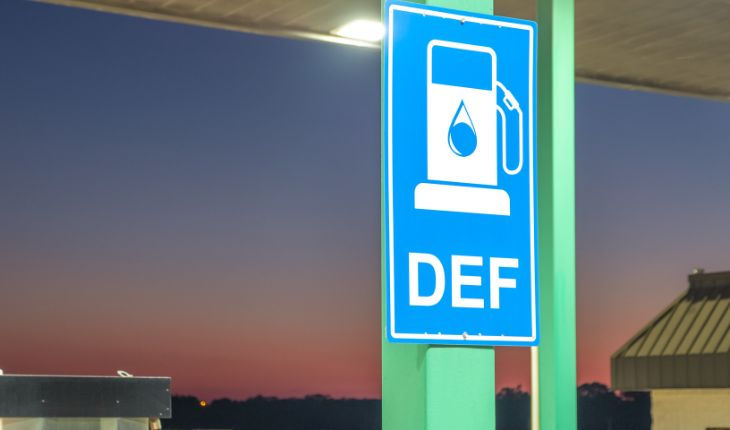Seismic Services Market Insights and Exploration Trends 2025
- Sophia Grace
- Aug 5
- 3 min read

In a world powered by exploration, seismic services play a vital role in uncovering what lies beneath the Earth’s crust. From energy exploration to geological mapping and environmental analysis, seismic technologies are transforming how we interpret subsurface structures. What was once a rudimentary practice of sending shockwaves through the ground is now a complex, tech-driven field involving AI-based interpretation, high-resolution 3D imaging, and remote sensing applications. But why is seismic exploration experiencing such an upswing, and what does it
mean for industries, communities, and scientific research?
Whether it’s for oil and gas exploration, geothermal projects, or earthquake hazard assessments, seismic services have expanded far beyond traditional boundaries. Their applications are now influencing urban planning, mineral exploration, and even offshore wind farm development. These services are no longer restricted to high-stakes exploration—they're vital tools for making informed, data-driven decisions on land use, energy sourcing, and sustainability.
Expert Insight: Understanding the Seismic Services Landscape
According to Expert Market Research, the seismic services industry is evolving rapidly, integrating cutting-edge technologies like drone-based seismic sensors, real-time data analytics, and autonomous underwater vehicles (AUVs). and other regional sectors depend heavily on accurate geological surveying, making seismic services indispensable for resource-rich terrains. With rising investments in energy and infrastructure projects, seismic exploration is turning into a crucial enabler of long-term growth strategies.
Cracking the Code Beneath Our Feet
Seismic services essentially revolve around interpreting vibrations. These vibrations are either naturally occurring (like earthquakes) or artificially generated using tools like seismic vibrators or explosive charges. By analyzing the reflection and refraction of seismic waves, experts can construct 2D or 3D maps of the underground structure. These detailed subsurface images help companies and governments make confident decisions on where to drill, dig, or avoid entirely.
What makes this field so dynamic is its intersection with technology. Algorithms now analyze seismic data at lightning speed, revealing geological faults, gas pockets, aquifers, and mineral beds. This shift not only improves accuracy but also reduces environmental disruption, as smaller, more precise operations replace large, invasive exploration methods.
Regional Spotlight: The United States as a Seismic Innovation Hub
The United States stands as a powerful beacon in the world of seismic services. From the oil fields of Texas to the tectonic landscapes of California, the nation has long relied on seismic exploration for energy and environmental monitoring. In recent years, seismic services in the U.S. have seen major advancements in environmental applications, such as monitoring carbon storage sites, analyzing earthquake-prone zones, and assessing subsurface stability for infrastructure development.
In states like Alaska and Colorado, seismic tools are even being used to monitor permafrost degradation and potential landslides due to climate change. The integration of geospatial data and seismic analysis has opened new doors for researchers and policymakers, offering actionable insights that contribute to sustainable land and resource management.
Navigating Challenges in a Rapidly Evolving Sector
Despite the technological advancements, the seismic services industry isn't without its challenges. Environmental concerns, especially those linked with induced seismicity caused by hydraulic fracturing or deep drilling, have pushed the sector toward more responsible and transparent practices. Moreover, data privacy and ownership issues are emerging as massive volumes of subsurface data are being collected and shared across platforms.
Another pressing issue is the accessibility of seismic technologies. While large corporations can afford high-end surveys, smaller entities and developing regions often lack the infrastructure or funding to adopt these services. The future will likely see democratization through cost-effective portable seismic devices, open-source data models, and satellite-aided seismic analytics.
A Look into the Future: Where Are We Heading?
The future of seismic services is set to become smarter, cleaner, and more collaborative. Machine learning algorithms are making seismic interpretation more intuitive and less reliant on human guesswork. Cloud platforms are allowing real-time access and multi-user collaboration for seismic datasets. And perhaps most excitingly, low-impact technologies like fiber-optic sensing and nanoseismic monitoring are reducing the footprint of exploration activities.
Emerging applications are also becoming more diverse. Seismic services are now being used to assess geothermal energy potential, track CO₂ sequestration, and monitor glacier movement. With urban areas expanding rapidly, seismic services could soon play a pivotal role in ensuring cities are built in structurally safe zones, capable of withstanding natural calamities.
Seismic Services: More Than Just a Niche Sector
To call seismic services a niche would be an understatement. They are foundational to industries that shape modern life—energy, infrastructure, and environmental science. As we step into an era of sustainability, resilience, and technological progress, seismic services will no longer be behind the scenes—they'll be at the forefront of decision-making.
From deciphering Earth’s silent stories to enabling smarter construction and cleaner energy, seismic services are not just about finding what lies beneath. They’re about building a future with clarity, confidence, and care.









Comments